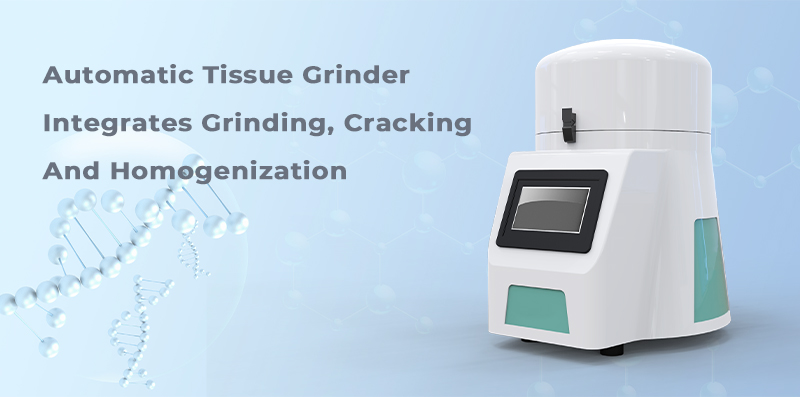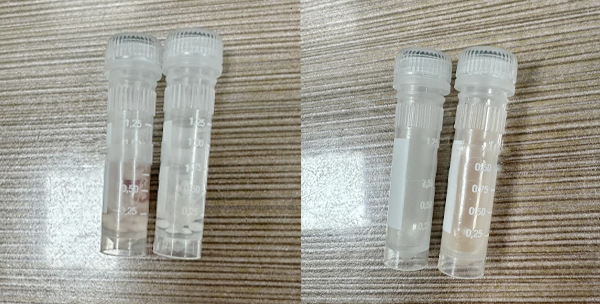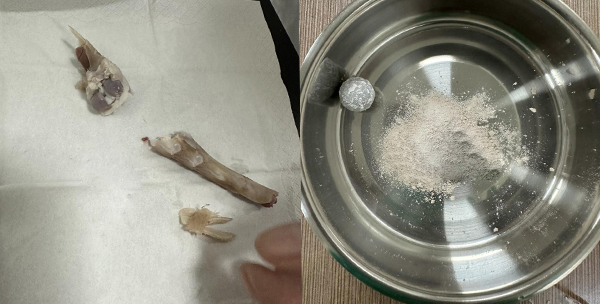Extracting high-quality DNA/RNA or protein from bones and animal tissues is a crucial step in biological experiments, providing high-quality samples for later experiments.
Sample disruption is a crucial step for DNA/RNA extraction, different sample types require different disruption methods, Welso recommends a fully automated tissue grinder for bone and animal tissue grinding, and shares some experimental steps below.

Preparation Before The Experiment:
Bones: Prepare some fresh animal bones to ensure that there are no impurities and excess muscles attached.
Spleen and muscle tissue: Prepare some fresh spleen tissue and muscle tissue to remove fat and connective tissue.
Mill: Welso automatic tissue grinder.
Consumables: 2ml centrifuge tube, 2mm zirconia beads, 50ml stainless steel grinding jar, liquid nitrogen, etc.

Procedure:
Grinding of spleen and muscle tissue:
●Tissue processing: Cut the spleen tissue and muscle tissue into small pieces and place them in a 2 ml centrifuge tube. Make sure the tissue block is the right size for easy grinding.
● Add grinding beads: Add an appropriate amount of 2 mm zirconia beads to each centrifuge tube. The number of beads depends on the amount of tissue and generally needs to cover the surface of the tissue.
●Grinding operation: Put the centrifuge tube containing the tissue and beads into the tissue grinder, and grind according to the following parameter settings: 30s repeat several times (the specific number of times depends on the hardness of the tissue), the interval is 10s, and the frequency is 65HZ.
● Check the grinding effect: After the grinding is completed, take out the centrifuge tube and observe whether the tissue is evenly ground. If necessary, grind again.
Experiment Performance:

Grinding of Bones:
● Bone treatment: Divide a whole bone into small pieces with forceps to ensure that each bone is of the right size for grinding.
● Drying process: Use a paper towel or absorbent paper to absorb the moisture on the surface of the bone to ensure that there is no moisture interference during the grinding process.
● Liquid nitrogen soaking: Screw the lid of the stainless steel grinding jar containing the bones and soak it in liquid nitrogen for a few minutes until the grinding jar is no longer bubbling. This step helps to reduce bone hardness and increase grinding efficiency.
● Grinding operation: Take out the grinding jar, immediately put it into the tissue grinder, and grind according to the following parameter settings: 30s, interval 10s, frequency 50HZ. Note that due to the high hardness of the bones, there may be a lot of noise during the grinding process, so protective measures need to be taken.
● Grinding effect: After the grinding is completed, take out the grinding jar and observe whether the bones are evenly ground. If necessary, grind again.
Experimental Performance:

Conclusion:
Efficient and homogeneous grinding of bone and animal tissues was carried out by Welso automated tissue grinder to successfully extract high-quality DNA, RNA, or protein.
Notes:
● For spleen and muscle tissue, the grinding effect can be improved by adding an appropriate amount of zirconia beads. The number of beads and the amount of tissue need to be matched to ensure uniform grinding.
● For bone grinding, soaking in liquid nitrogen is a critical step. By reducing bone hardness, grinding efficiency can be increased and noise can be reduced.
● In cases where the amount of tissue processed is particularly small, a finer grinding effect can be obtained by grinding with small beads.
● Before bone grinding, be sure to absorb the moisture on the surface of the bone to avoid ice crystals during the grinding process to interfere with the grinding effect.
The use of the grinder in this experiment has the advantages of high efficiency, uniformity, and easy operation, providing high-quality samples for subsequent biological experiments and meeting the needs of different experimental samples.